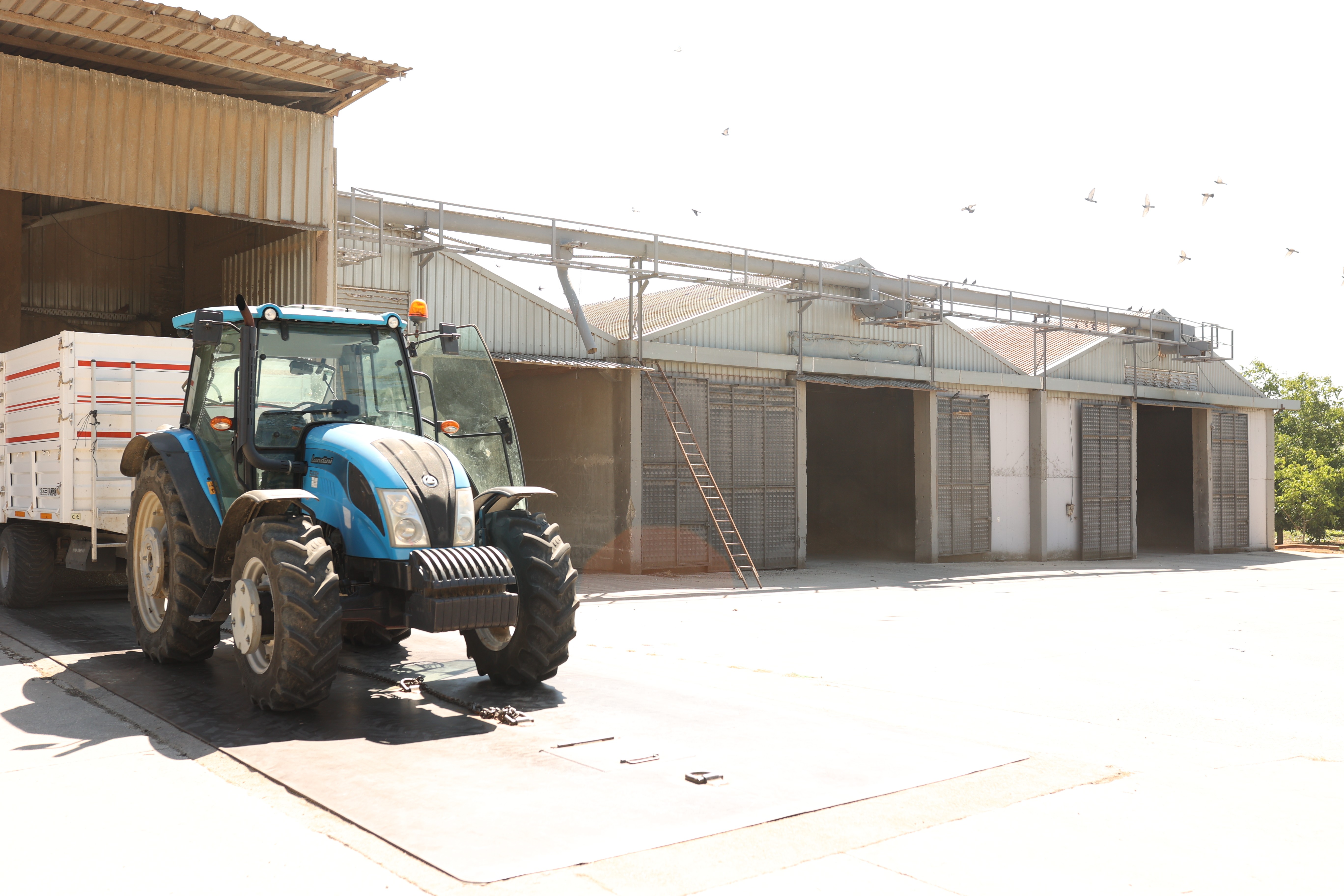Industrial Wheat Storage: Ensuring Long-Term Freshness
Proper wheat storage in industrial settings is crucial for maintaining product quality, ensuring food safety, and optimizing downstream operations such as milling and food production. Industrial facilities that store large quantities of wheat must focus on maintaining the right conditions to prevent spoilage, pest infestations, and operational inefficiencies. Effective storage techniques also help minimize financial losses and ensure the consistency of wheat quality over extended periods.
Key Considerations for Large-Scale Wheat Storage
Why Proper Wheat Storage is Critical for Industrial Operations
The quality of wheat impacts everything from milling efficiency to the final product used in bakeries and food processing plants. Improper storage conditions can degrade the wheat, affecting its nutritional content and suitability for milling. Moisture, temperature fluctuations, and contamination are the main threats to wheat quality in bulk storage. Therefore, investing in robust storage infrastructure and monitoring systems is essential to ensure long-term product viability.
Common Challenges in Industrial Wheat Storage
• Moisture Management: High moisture levels can lead to mold growth, spoilage, and reduced wheat quality. Wheat is hygroscopic, meaning it absorbs moisture from the air. When moisture content exceeds 14%, it accelerates microbial activity, including mold formation. Proper humidity control is essential to minimize these risks.
• Pest Control: Insects, rodents, and other pests can infest large-scale storage facilities. If left unchecked, they can contaminate vast quantities of wheat, resulting in significant product loss. Implementing pest prevention techniques and regular fumigation can mitigate these risks.
• Long-Term Storage Risks: Over time, wheat stored in bulk is susceptible to oxidation and nutrient degradation, particularly when exposed to air. This reduces its milling quality and nutritional value. Properly sealed silos can prevent these issues by limiting air exposure.
Best Practices for Storing Wheat in Large Quantities
Selecting the Right Storage Facility
• Silos vs. Warehouses: Silos are the most effective option for long-term wheat storage, providing airtight environments that protect against moisture and pests. Warehouses, which are commonly used for short-term storage, must be well-ventilated and equipped with temperature and humidity controls.

• Sealed Silos: Airtight storage in sealed silos is crucial for long-term wheat preservation. These silos prevent the entry of pests and minimize air exposure, reducing oxidation and moisture buildup. By maintaining a controlled atmosphere, sealed silos ensure that wheat quality is preserved over extended periods.
• Grain Elevators: Grain elevators are often used in large-scale operations to facilitate the efficient movement, storage, and handling of wheat. They allow for easy transfer between different storage facilities and help maintain product integrity by preventing damage during handling.
Optimal Environmental Conditions for Wheat Storage
• Temperature Control: For large-scale wheat storage, the recommended temperature is 15°C or lower. High temperatures accelerate metabolic activity, causing the wheat to degrade more quickly and encouraging the growth of mold and bacteria. Temperature control systems, such as air conditioning or refrigeration, are essential for keeping the wheat in optimal condition.
• Humidity Management: The relative humidity in storage facilities must be kept below 12% to prevent moisture absorption by the wheat. Excessive moisture can lead to the growth of mold and bacteria, spoiling the stored grain. Installing dehumidifiers and ensuring proper sealing of storage units are effective ways to manage humidity.
• Ventilation: Proper air circulation helps to avoid moisture buildup inside storage facilities. Ventilation systems should be designed to maintain uniform airflow throughout the storage area, ensuring that no “hot spots” or areas of condensation form, which could lead to spoilage.
Monitoring Wheat Storage Conditions
• Use of Sensors and Monitoring Systems: Automated sensors can monitor temperature, humidity, and air quality in real-time, providing alerts if conditions fall outside of acceptable ranges. This allows for quick adjustments and prevents conditions that could lead to spoilage or pest infestations.
• Regular Inspections: In addition to automated systems, regular visual and physical inspections are critical. These inspections should look for signs of mold, pests, or spoilage, allowing facility managers to take corrective action before widespread contamination occurs.
Pest Management in Industrial Wheat Storage
Pest infestations pose a significant threat to stored wheat, and without proper management, they can result in large-scale losses. Industrial operations must adopt proactive pest control measures to protect their stored wheat.
Common Pests in Wheat Storage
• Weevils, Grain Beetles, and Rodents: These pests are common in wheat storage facilities and can enter through cracks, improperly sealed doors, or contaminated grain. Once inside, they can rapidly multiply and contaminate large quantities of wheat.
Preventing Infestations in Large-Scale Storage
• Fumigation Techniques: Regular fumigation is necessary to eliminate pests in silos and warehouses. Fumigation should be conducted according to strict safety standards, ensuring that no chemical residues remain in the wheat after treatment.
• Physical Barriers and Sealing: Properly sealing storage facilities is crucial to prevent pests from entering. Installing pest-proof seals on doors, windows, and ventilation systems is an effective way to protect stored wheat.
Integrated Pest Management (IPM) Strategies
Combining Physical, Chemical, and Biological Controls: Integrated Pest Management (IPM) involves using multiple methods to control pests while reducing reliance on chemical treatments. For example, using controlled atmosphere storage (CAS) with low oxygen levels can inhibit pest development without the need for toxic chemicals.
Ensuring Wheat Quality During Long-Term Storage
Long-term wheat storage presents unique challenges, including nutrient degradation and quality loss. Proper storage practices can help maintain wheat quality and extend its shelf life.
Wheat Preservation Methods for Long-Term Storage
• Temperature Management: Storing wheat at lower temperatures reduces respiration rates, slowing down degradation and extending shelf life. Lower temperatures also inhibit microbial activity, reducing the likelihood of mold and bacteria growth.
• Aeration Systems: Forced-air systems help regulate temperature and humidity by circulating air throughout the storage facility. These systems prevent hot spots and moisture buildup, which can lead to spoilage.
Controlling Oxidation and Nutrient Degradation
• Limiting Air Exposure: Prolonged exposure to oxygen can degrade wheat quality by increasing oxidation. Using airtight storage systems and controlled atmosphere storage (CAS) helps minimize oxygen levels, preserving wheat’s nutritional content and milling quality.
Regular Quality Testing of Stored Wheat
• Moisture Content Testing: Regularly testing moisture levels in stored wheat is critical for maintaining quality. Moisture content should be kept below 14% to prevent spoilage.
• Grain Quality Assessments: Periodic testing for protein levels, starch content, and other key indicators of milling quality helps ensure that stored wheat meets industry standards. These assessments allow operators to detect and address any quality issues early.
Compliance with Food Safety Standards in Wheat Storage
Ensuring compliance with food safety regulations is essential for industrial wheat storage facilities. Adhering to standards like HACCP and ISO 22000 helps prevent contamination and ensures that stored wheat is safe for use in food production.

HACCP Plans for Wheat Storage Facilities
• Implementing HACCP (Hazard Analysis Critical Control Points): HACCP plans are designed to identify and control potential hazards in food storage. Implementing a HACCP plan involves monitoring critical control points, such as temperature and humidity levels, to prevent contamination risks.
Meeting ISO 22000 Standards for Wheat Storage
• ISO 22000 Compliance: ISO 22000 is a global food safety standard that outlines best practices for managing food safety risks throughout the supply chain. Meeting these standards ensures that storage facilities maintain safe conditions and properly document all processes.
Documentation and Auditing
• Maintaining Detailed Records: Keeping detailed records of storage conditions, pest control measures, and regular inspections is essential for regulatory compliance. Regular audits help ensure that facilities are meeting all required safety and quality standards.
Cost-Effective Solutions for Large-Scale Wheat Storage
Efficient storage management can reduce operational costs while preserving wheat quality. Investing in energy-efficient systems and automated processes can improve the overall efficiency of large-scale storage facilities.
Reducing Operational Costs through Efficient Storage Management
• Energy-Efficient Climate Control Systems: Installing energy-efficient systems for temperature and humidity control can significantly reduce operational costs in storage facilities. These systems help maintain optimal conditions for wheat while minimizing energy consumption and keeping operational costs low.
• Automation in Storage: Automated monitoring systems for temperature, humidity, and pest control can reduce labor costs and improve efficiency by providing real-time data and alerts for immediate action. This minimizes human error and ensures that storage conditions are consistently optimized.
Minimizing Losses from Spoilage and Infestations
Proper storage techniques can help minimize losses due to spoilage and pest infestations, leading to higher profitability. Regular inspections, fumigation, and pest management techniques ensure that stored wheat remains in optimal condition, reducing waste.
Bulk Handling Solutions for Efficient Wheat Storage
• Best Practices for Transporting and Handling Wheat: To avoid contamination and damage during handling, large-scale operations must implement best practices for bulk wheat transportation. Using elevators and conveyors designed to minimize damage and contamination can ensure that wheat remains safe and intact throughout the storage and handling process.
Wheat Storage Solutions: Maximizing Freshness and Reducing Losses
Proper wheat storage is essential for maintaining quality, ensuring food safety, and preventing financial losses in large-scale industrial operations. By controlling temperature and moisture levels, implementing effective pest management practices, and complying with food safety standards like HACCP and ISO 22000, operators can extend the shelf life of stored wheat and reduce spoilage risks. Investing in modern storage technologies and monitoring systems is critical to ensuring long-term storage efficiency and profitability.


